You Haven’t Changed a Bit, KW Institute! A Reopening.
- Christian Hain
- Jan 25, 2017
- 7 min read
Updated: Mar 24, 2020
(Berlin.) Imagine a famous art venue taking a four months’ vacation to break in the new boss, and do some much needed refurbishing. Imagine the return to business celebrated on a weekend of openings, performances, and free entry for all. Imagine crowds of locals and art tourists flocking to the space at night, queuing on the street for hours. Imagine them anticipating something monumental, extraordinary, yes: imagine them to feel part of something special. After all, it is a special occasion. Imagine them to find nothing inside but a tiny bar with three tables and four chairs behind the one, and a handful of ultra minimalist artworks behind the other door. The whole wide building, almost all the clean, new, immense, beautiful, exhibition space void, except for two circles drawn on wall and floor respectively, one framed work - A4 - and two vitrines. Imagine the crowds running amok, but this is the wrong term as “amok” refers to a state of passing insanity, and here we are talking about wholly conscious, and justified, wrath, imagine the crowds I say, demolish the whole refurbished space in an ultra violent performance that leaves nothing behind but ruins where curators and staff can barely escape the mob, battered and naked. This just happened at Berlin’s KW Institute.
Minus the riots.
People felt much too abased to give vent to their feelings even in minor protests, and truth is, they had nobody to blame but themselves, nobody else to direct their fury at. After all, what did you expect?
Dutchman Krist Gruijthuijsen was appointed director of KW Institute last summer, and his probation period coming to a close, he now presents his first programme. The headliner is Ian Wilson (no, not Brian, I got that wrong at first too) whose art Gruijthuijsen describes with the keywords “communication, exchange, language”. In the 1970s, these temporarily changed to “spirituality and Zen” (sounds not very innovative, but more like a slave to the zeitgeist), followed by “the known and the unknown”, and, finally, in the 1990s, “Yoga” (?!).
There are few works in this minuscule Berlin retrospective. And you have to search for them. A framed phrase: “Time spoken, 1982. This work is installed when the word ‘time’ is spoken. Ian Wilson.” The hand written signature seals the typed text. Spoken by whom, and how often? Must be a fast gallery intern, or a slow speaker indeed.
A collection of “announcement cards” in a vitrine. Sort of a proto-Sehgal, Ian Wilson liked to instigate discussions, later documented not in protocol, film or photo, but his invitation only: “May 2nd through 4th 1976 Ian Wilson will be in Basel for discussion.” “Le 4 Avril 1974, à 20 heures précises, 16-18 rue Littré, 75006 Paris Ian Wilson sera présent pour un entretien dont le sujet sera lu par Michel Claura.” &c. The concept is interesting no doubt (though not fundamentally different to a daily talk on TV. And most people don’t have anything important to say. No, they don’t), but showing these cards in a exhibition context does not quite make sense, does it? There won’t be any spontaneous discussion at KW.
A second vitrine has a 1968 NY Times in which the artist bought advertising space. And another, more material work, is supposed to “operate through the visitor’s mind”: A half sphere on the wall allegedly appears as a full sphere, a globe, an orb, a ball, if only you watch it for long enough. Balls. Staring at it for an hour, you still see an unremarkable wall lamp without inbuilt light source, and feel stupid for standing and staring. But I never saw those “hidden” 3D images in books, or on screen, either.
To the side of one vitrine, two rectangles on the wall are not part of the show. To the other side, a circle is. Also a second circle, chalk and on the floor (wait, I’ve seen something like that in a horror movie once, was it that ghosts are not allowed inside, or what?). You may step inside and start a discussion. I’ve counted seven works in total, taking each vitrine for one. KW’s lists three more. Honestly, I don’t mind conceptual art. I mind the time it takes to visit an exhibition like this, when I could just have stayed home and read some lines about the works to the same effect. The visual experience adds nothing at all.
To be fair, there is a second exhibition that opened on the same day. And again, you cannot say, it would bring an overload of works. A single installation, to be precise. Norwegian Hanne Lippert made them install a caged in spiral staircase in the middle of the otherwise empty main hall. The thin tin steps won’t fill you with trust when ascending to heaven. Upstairs, you bump your head in the ceiling if you’re taller than 1.60m (I did twice, which was admittedly rather dumb). Then you sit down on the flesh coloured carpet and watch other people coming up to bump their heads. It feels like a Laurel and Hardy movie in an endless loop. You may also look into an empty roof garden, or the neighbours’ living room. But mostly you should focus of the sound installation, with the artist (or an actor) telling about life, art and those important things. Very deep. Not bad, really!
Not less dangerous than that ceiling, and again issued without a warning (which is great – live dangerously!), are the stairs leading to Bob’s Pogo Bar in the cellar. That’s right, KW now operates a bar on their premises to add to the existing, Dan Graham designed, café glasshouse. Bob’s Pogo Bar opened in a former exhibition space with a separate entrance from the outside. Something like it already existed twenty years ago, in the original KW. A priori, I’d prefer a place called 'Boobs’n’Pogo', but ‘What About Bob’? Well, Bob is American artist Robert Wilhite, who will manage the bar. It’s dark in here, your co-drinkers taxidermied foxes, and take heed not to run into the DJ mixer. Apparently, on your second visit they'll ask you to become a “member”. We’ll see how they intend to register the free visits. KW insists, the membership system has nothing to do with their infamously elitist attitude.
Those of us who took part in the press visit on Thursday morning came back the night, rubbing hands with a malevolent smile for all those unsuspectingly waiting in line (later it would extend to the street, with a bouncer counting those leaving). In the courtyard, it split in half, one for the actual entrance, and one for Bob’s bar. Ninety per cent of those in the bar queue believed, they were waiting for an exhibition. Many were drinking in the café, hardly anybody at the bar. As soon as people realized there was no art, they turned back, cursing KW. This was a performance in itself, and certainly provided grounds for communication.
There is more to the “new” KW, though not exactly exhibitions. For example another performance every weekend. This was exempt from the reopening days’ free entry policy, and you needed to secure your place a month in advance. This you only knew if you read attentively all KW’s Facebook event pages. Which you didn’t, if you are like me. And then, ... Once upon a time in 1982, Elli Robert Fitoussi David released Words, one of the cheesiest earworms in all pop history. “This is justa _ simple song _ that” – No. Please God, no – “I made for you on mah ouwn” – No, that’s enough. Stop it. – ... “pleeeease beeeelieve meee __ words (doomdoomdoom) don’t” – I SAID STOP IT! ...“come eaasyyyy.” FR David was a one hit wonder, but with unforeseeable long term consequences. Around the year 2000, a German crossover band asked, “whatever happened to FR David – drinking vodka from bottles, or Coca Cola Light; Is he married with children, or plagued by loneliness at night?” - It rhymes even better in German. And in 2009 Amsterdam’s de Appel Arts Centre chose to dedicate an art magazine to FR David, called ... FR David. FR David’s co-editor is Will Holder, and he is also the first to profit from KW’s newly established residency programme for artists, or art directors, or graphic designers, or whatever you choose to call him. Unsurprisingly, the latest issue of FR David has been launched in Berlin, on KW’s reopening weekend.
“Words don’t come easy”, now that’s something you never expected to hear in connection with KW’s know-it-alls. If anything, they stand for the opposite extreme, intellectualistic oral diarrhoea. It’s not true, I'd despise KW Institute, even if I think their love of minimalism is mostly due to its leaving maximum space for the curator’s ego. They close for months, then reopen with a handful of works like a raised middle finger “in your face”, one of the loudest “Fuck y’all” ever heard in art. It’s a statement. You cannot but admire them for this. They deserve all our respect for their sheer stubbornness. For being unchangeable, unteachable, for the guts it takes to carry through with a prank like this. There is something to rely on.
You know what to expect from KW, and if not you can trust on being disappointed. A coffeetable book on display in the newly designed, and moved behind another door, entrance area is titled A Feminist Interpretation of Baruch Spinoza. (Let me guess: Substance and Substanc-Ess?) This is so KW! You’d need to invent KW Institute, if it didn’t exist. Thanks for annoying me once again, I love to hate you! Bob’s probably wouldn't want me for a member, which makes it kind of ok to become one.
Seen from a different angle: Under its new direction, KW changes.
It now longer wants to be one of Berlin’s best known exhibition venues, but a place for instantaneous events, for the moment, for conversation. Something is happening, and you're invited to come and witness. Or not. What happens at KW, stays at KW; and ever the same.
Ian Wilson, 20 January-14 May 2017
Hanne Lippard, 20 January-9 April, 2017, KW Institute
World of Arts Magazine - Contemporary Art Criticism

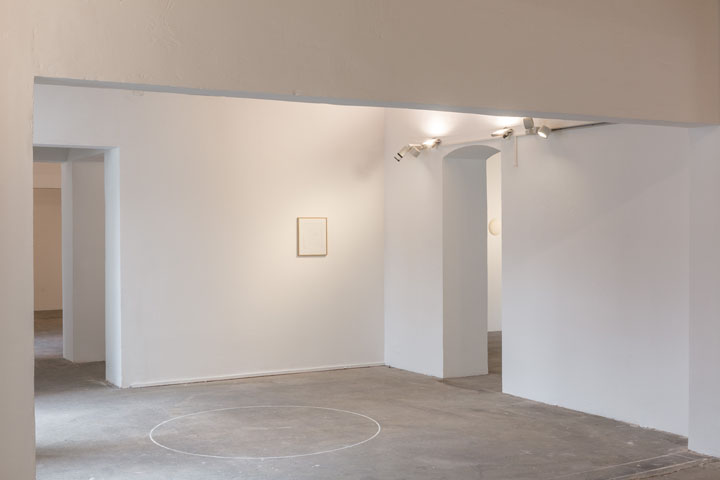

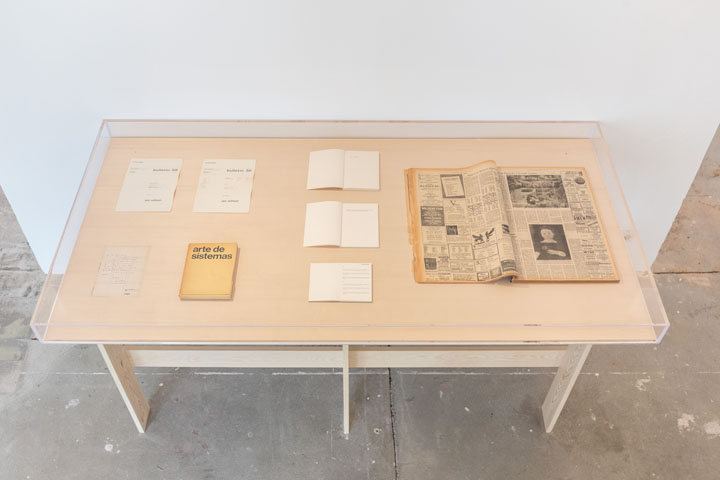

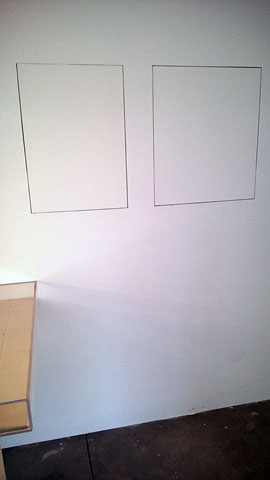

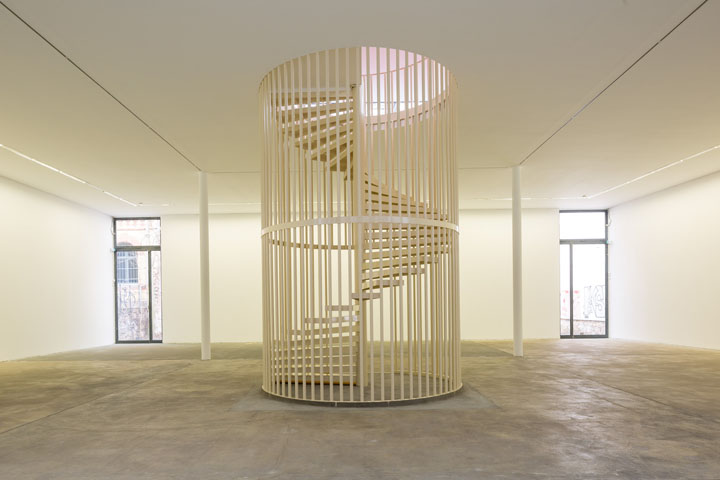

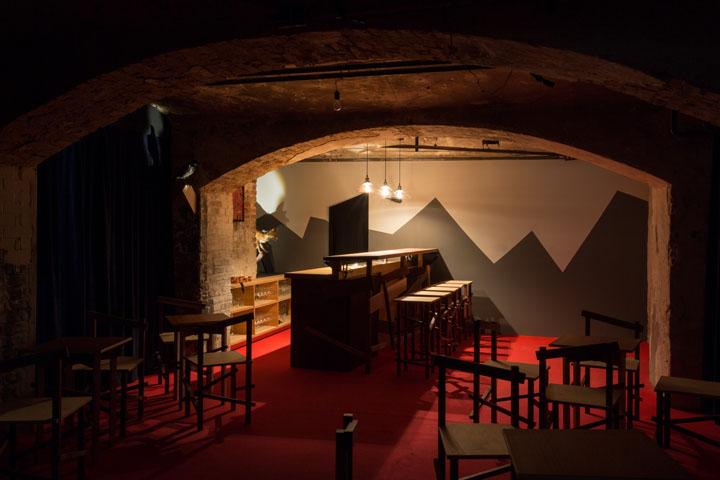
Comments